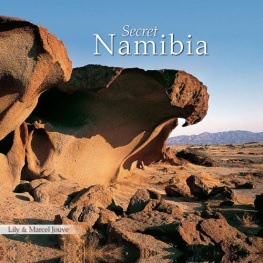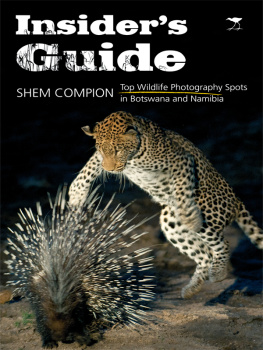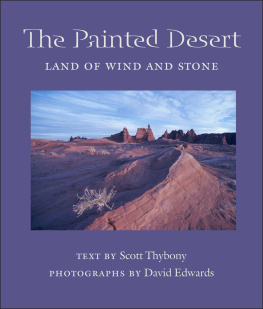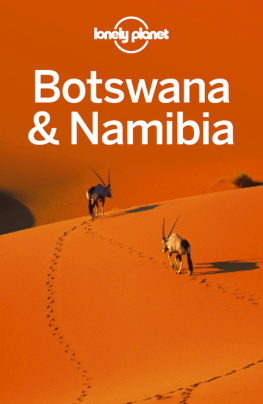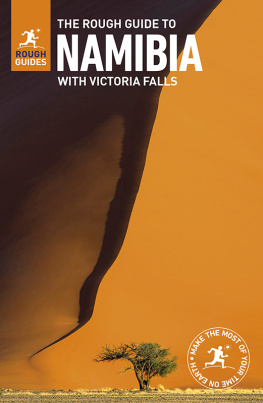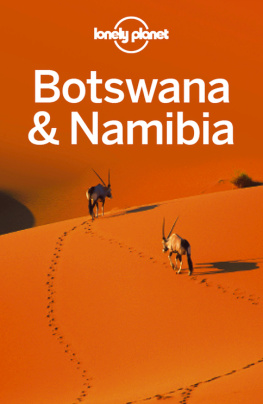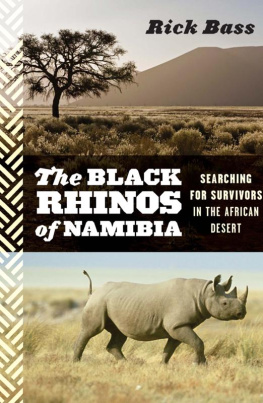
Published by Struik Travel & Heritage
(an imprint of Random House Struik (Pty) Ltd)
Company Reg. No. 1966/003153/07
Wembley Square, First Floor, Solan Road, Gardens, Cape Town, 8001
PO Box 1144, Cape Town, 8000, South Africa
First published in hardcover by New Holland Publishers in 1992
Softcover edition published in 1999
Second edition published by Random House Struik in 2014
First published as an ebook edition in 2014, based on the print edition of 2014
Copyright in published edition: Random House Struik 1992, 1999, 2014
Copyright in text: Peter Joyce 1992, 1999, 2014
Copyright in photographs: Gerald Cubitt 1992, 1999, 2014 with the exception of the following, reproduced with the kind permission of the copyright owners:
Adil Bradlow/PictureNET Africa:
Ariadne van Zandbergen:
Jan Du Plessis: top left and bottom left
Johan Jooste: top
Judy and Scott Hurd: bottom
Library of Parliament, Cape Town: right
MuseumAfrica: top
Namdeb: top right
National Archives of Namibia:
NWR Onkoshi:
Sheldon Kotze:
Swakopmund Library: bottom right
Publisher: Pippa Parker
Managing editor: Roelien Theron
Designer: Gillian Black
Project assistant: Alana Bolligelo
Proofreader: Sarah Gruft
ISBN 978 1 92821 304 8 (Print)
ISBN 978 1 92821 305 5 (ePub)
ISBN 978 1 92821 306 2 (PDF)
All rights reserved. No part of this publication may be reproduced, stored in a retrieval system or transmitted, in any form or by any means, electronic, mechanical, photocopying or otherwise, without the prior written permission of the publishers and copyright holders.
Also available in German as Dies ist Namibia (978 1 92821 310 9)
Please email any comments or updates to:
Get regular updates and news by subscribing to our newsletter at www.randomstruik.co.za
PHOTOGRAPHERS ACKNOWLEDGEMENTS
I would like to thank the many people and organisations who assisted me during my stay in Namibia, in particular: The Namibian Ministry of Information and Communication Technology; Kalahari Sands Hotel (Sun International) in Windhoek; Namib Sun Hotels: Mokuti Lodge (Etosha), Strand Hotel (Swakopmund), Hotel Hamburger Hof and Otjiwa Safari Lodge (Otjiwarongo), Hansa Hotel (Keetmanshoop); Namdeb Diamond Corporation (Oranjemund and Navachab); Rssing Uranium Limited; Zambezi River Lodge; Okonjima Guest Lodge; Mount Etjo Safari Lodge, Desert Adventure Safari; Johan Nel; Braam Naud; Grant Burton and Marie Holstenson; Val, Rose and Wayne Hanssen; Tryg and Trish Cooper; Amelia and Strydom van der Wath; Chris Eyre.
FRONT COVER: Namib desert. Insets (left to right): Zebra, Etosha National Park; colonial-style architecture, Lderitz; Sandwich Harbour, Namib-Naukluft National Park; quiver trees, Keetmanshoop; Himba girl, Kunene Region
TITLE SPREAD: Gemsbok (Oryx gazella), Orange River

Typical pre-Namib landscape in Namibias far south

INTRODUCTION
Namibia is a vast and mostly desolate territory that sprawls over the southwestern regions of the southern African subcontinent. Bisected by the Tropic of Capricorn, the country is bordered in the west by a forbidding 1 500-kilometre Atlantic coastline, in the north by the Kunene and Okavango rivers (beyond which lie the republics of Angola and Zambia), in the east by Botswana, and in the southeast and south by the Republic of South Africa.
Included within Namibias generally straight boundaries are two geographical and historical oddities. The Zambezi Region, previously known as the Caprivi Strip, is a long, narrow stretch of land (482 kilometres long and between 35 and 80 kilometres wide) that looks like a probing finger reaching eastward to and along the Zambezi River from the countrys northeastern region, with its extremity close to the meeting point of three neighbouring states. Here Namibia comes together with Zambia, Zimbabwe and Botswana at the small town of Kazungula, and interestingly the common border of the last two countries is, at 45 metres, the shortest of the worlds international frontiers.
The Zambezi (Caprivi) Region is one of the more curious relics of that extraordinary flurry of European expansionist activity known as the Scramble for Africa, and is testimony of an attempt by the 19th-century German imperialists to link their western and eastern possessions in Africa by means of a 1 500-kilometre cross-continental corridor a hugely ambitious aspiration but, in the context of those grandly acquisitive times, one that wasnt entirely beyond the realms of possibility.
Walvis Bay, on the western seaboard, is also a hangover from the early colonial era. The bay, which provides a well-protected anchorage on a coast not noted for its natural harbours, was annexed to the British Crown in 1878. Six years later, in 1884, it became an integral part of the Cape Colony. After lengthy negotiations, this strategic, economically valuable enclave covering 1 124 square metres, situated roughly midway between the Orange and Kunene rivers, was finally returned to Namibia by South Africa in 1994.
Namibia is 824 269 square kilometres in extent; from north to south it is 1 320 kilometres long, and from west to east it ranges between 400 and 1 000 kilometres in width (excluding the Zambezi Region). It is a big country, even by African standards, larger than Texas, about four times the size of the United Kingdom, and 27 times the size of Belgium. It is also a sparsely populated one: the total of its culturally diverse peoples stands at just over 2 million, some 340 000 of whom live in and around the capital, Windhoek.

The golden grasslands of south-central Namibia stretch as far as the eye can see.
THE LAND
This is a country of immense solitude, of far horizons, arid deserts and jagged mountain heights, hauntingly beautiful in its stark emptiness, unforgiving in the harshness of its climate and terrain. In some places the soils are surprisingly rich, but the rains are seldom generous, drought is the norm, and most of the great sunlit spaces are able to sustain only the hardier forms of plant and animal life.
The lie of the land
In the broadest physiographic terms Namibia comprises three distinct regions. A high central plateau runs like a spine from the southern to the northern borders of the country, and this is bordered on either side by deserts: the Namib of the coastal plain to the west and the Kalahari to the east.
The Namib
This long, narrow desert (the worlds oldest) extends almost 2 000 kilometres northwards from the Orange River to the Kunene, and beyond to Namibe in Angola. It stretches inland for an average of 150 kilometres, the terrain steadily rising until, at an altitude of around 1 000 metres, it reaches the edge of the central plateau.
The desert has many faces. In the south it is a sea of sand, of massive, regimented, shifting dunes, some of them a full 30 kilometres long and nearly 250 metres high. Here and there among them lies the odd salt pan or mud flat, relic of a sporadic stream that tried, and failed, to make its way to the ocean. Underground rivers cross the wasteland, their dry beds incongruously but refreshingly mantled in greenery. Farther north, the land levels to a harder plain from which the occasional isolated granite mountain rises, and the bedrock of which is slashed by deep gorges. There is little soil here, and what there is tends to be confined to the few floodplains and river estuaries of the area. Here, too, are the desolate shores of the Skeleton Coast, graveyard of a thousand ships and named for the many mariners who survived the wrecks only to perish in the desert wastes.
Next page

